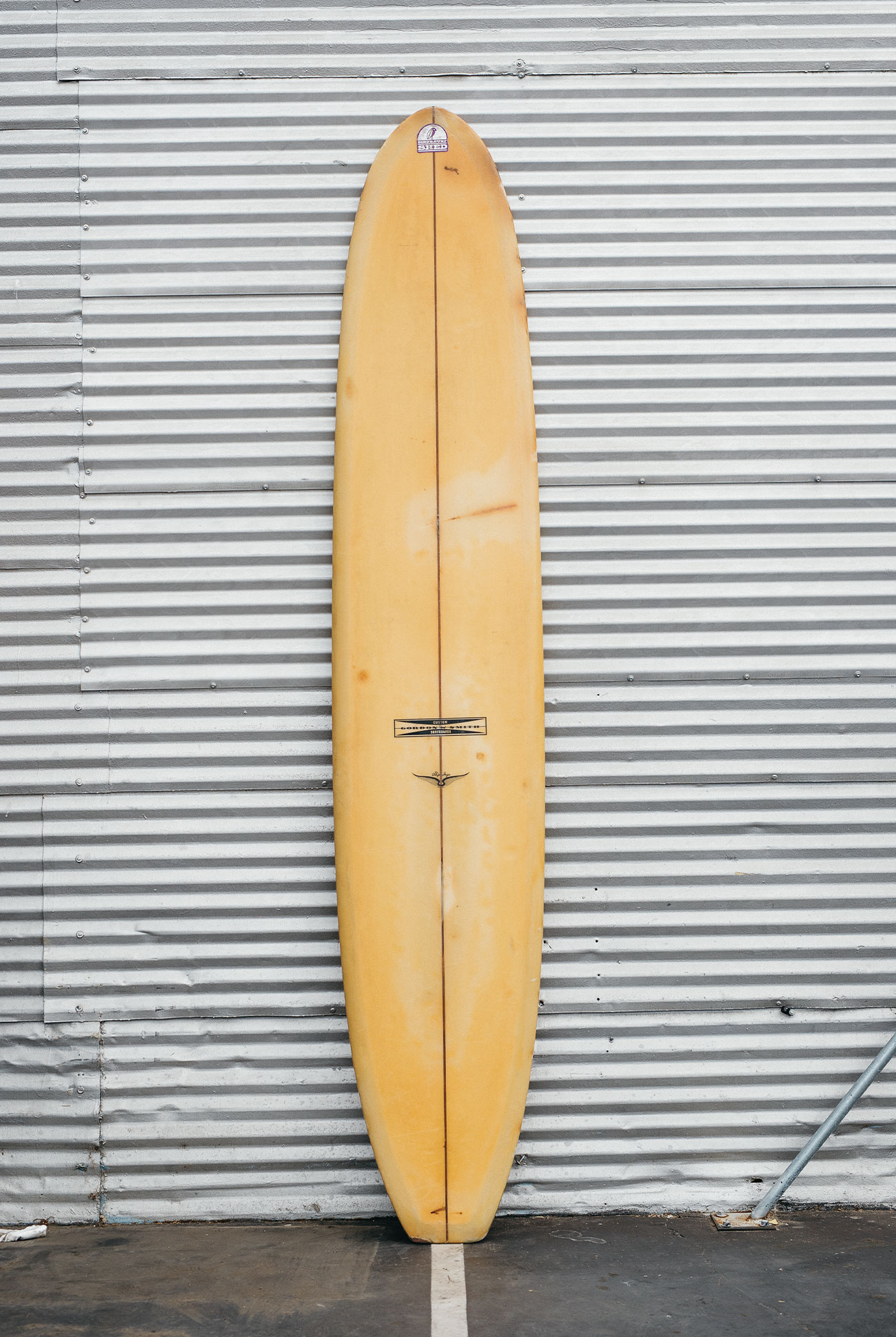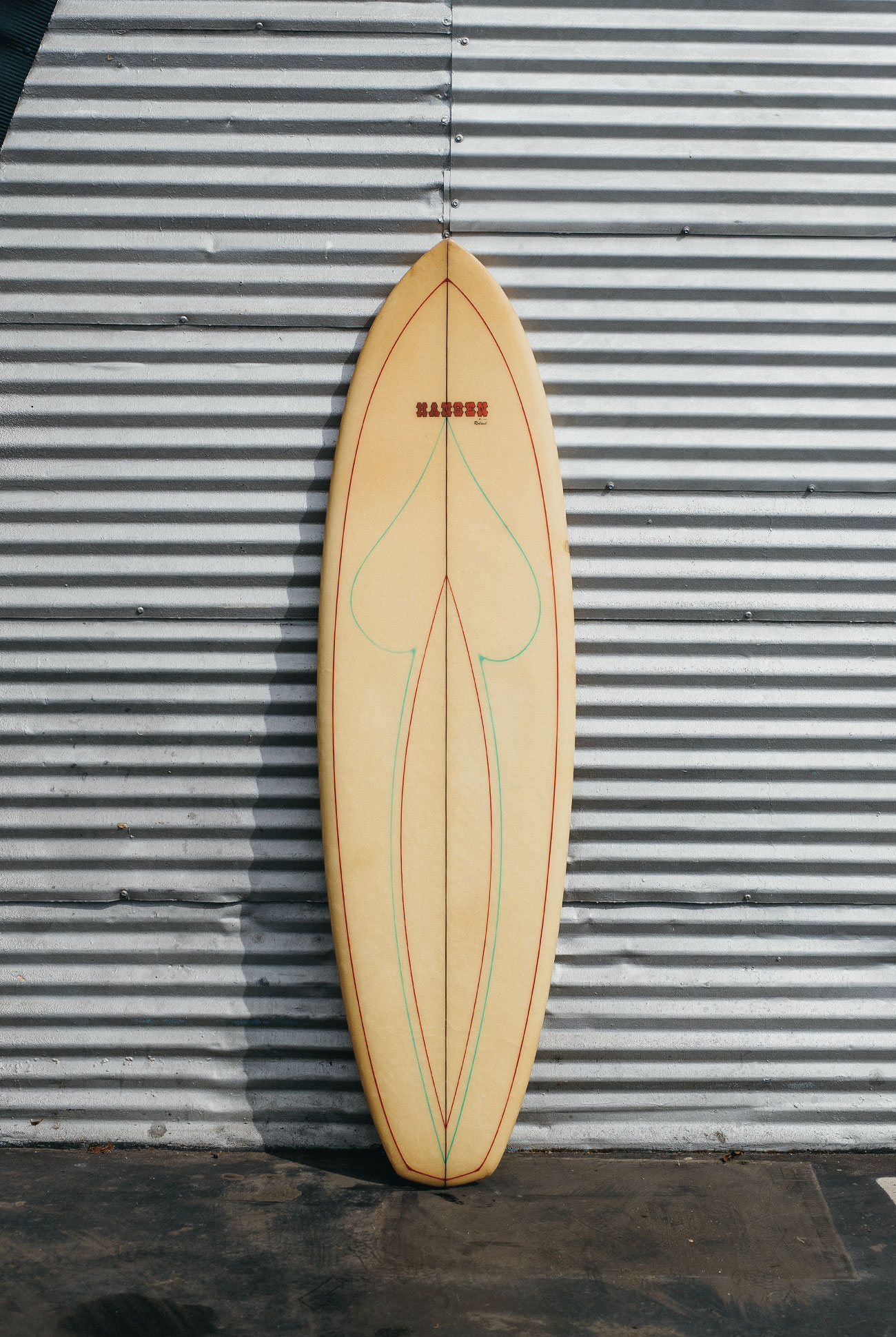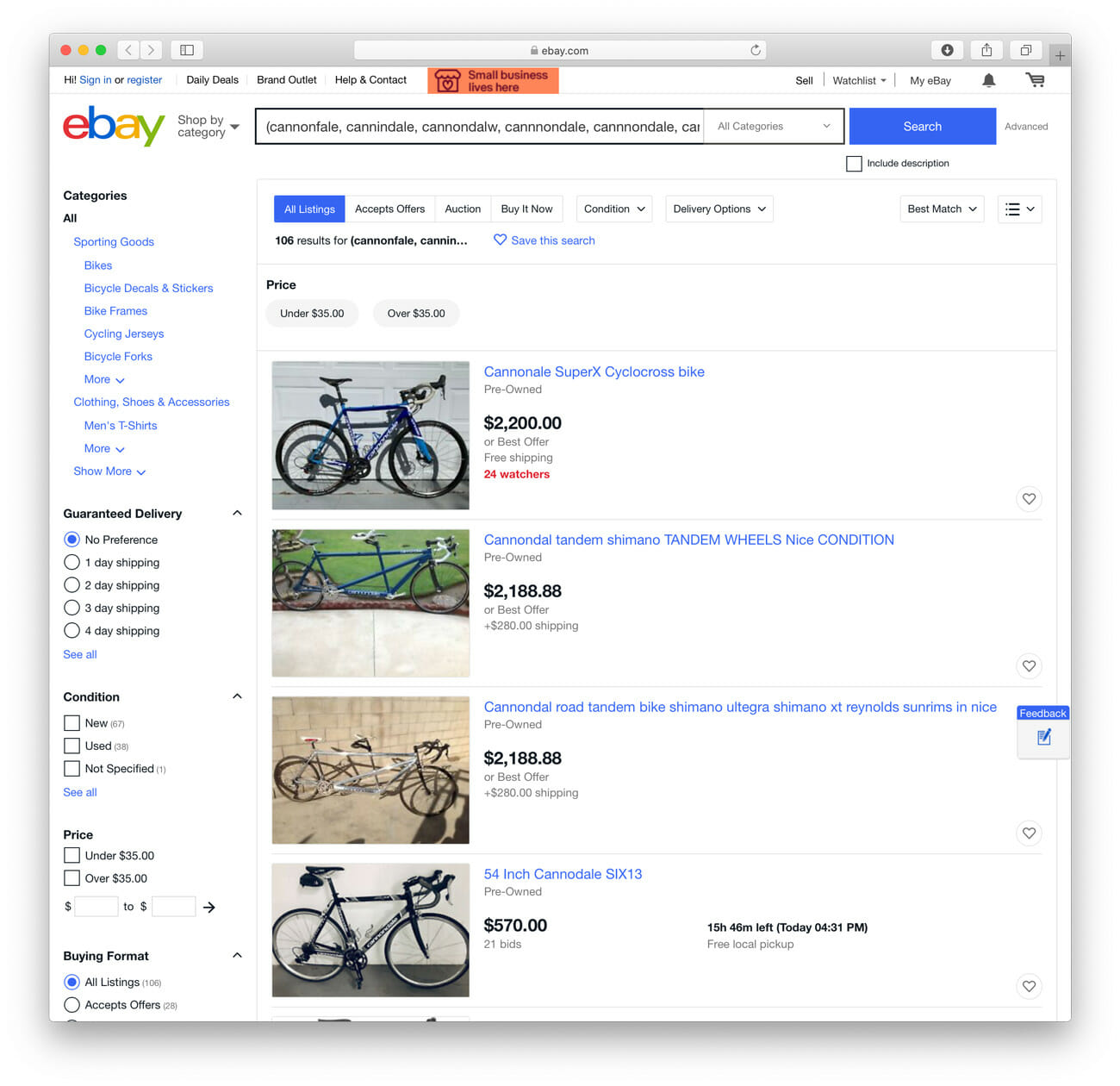Eric “Bird” Huffman keeps the entire history of modern surfing in a 4,000-square-foot corrugated tin prefab structure in San Diego. Around 1,200 surfboards cover the walls and ceiling of Bird’s Surf Shed, narrating the entire evolution of the sport from 10-foot-long single-fin Balsa guns up to the short, modern thrusters. Huffman, who’s been paddling out for over 50 years and working at surf shops for just as long, sees each piece as part of a larger chronicle. “Each board becomes part of the story — who shaped it, where it was ridden, how, when and where it was made.”
1944

9’8 Planing Hull
Shaped by Bob Simmons
“The majority of boards then were made by a surfer for a surfer, and each area in California would have maybe two or three gurus that had a slightly different take on designs. Simmons was considered to be a pretty revolutionary shaper. He was a knowledgeable guy, really into hydrodynamics. This was his personal board. It’s solid balsa, probably sixty pounds. It was designed to rise up out of the water with a hydrofoil effect. Simmons was at the forefront on design. I bought it from the guy who had purchased it from Bob himself.” — HF
Material: Balsa Wood
Fins: Single Fin
1966

10’0 Gordon & Smith
Shaped by Skip Frye
“This was something of a Golden Age. After the Gidget movie era of the late Fifties and Sixties, surfing pretty much took right off. Society was exposed to the cultural aspects in various ways. At first, it was friendly, fun and light. Then surfers themselves got a bit of a reputation for being kind of beatniks and eventually hippies because they lived an alternative lifestyle. Surfing was first and other responsibilities were based upon them being able to surf. This board is foam and fiberglass. It has a stringer made of wood and the fins were, for the most part, permanently attached to the board. Removable fins were just starting to come into play, mostly so [the boards] would pack easier when they were shipped, but they became a performance-enhancing system. The surfing level had improved quite a bit because the equipment had improved in terms of design and material. Gordon & Smith was one of the largest producers of the time.” — HF
Material: Polyurethane Foam and Fiberglass
Fins: Single Fin
1972

6’9 Hansen
Shaped by Joe Roland
“There was a dramatic shift from longboarding to shortboarding basically bought on by the Australians called the Shortboard Revolution. One year the boards were 9’6 to 10’2. The next year they were 9’0 and then half a year later, they were sub-seven. Surfers were building their own boards, taking the materials and getting creative for more aggressive surfing. It put a lot of companies out of business. Nobody would ride boards over a certain length. Major surf shops closed and the whole sport changed quickly. Hansen wasn’t as big a label as Hobie or Dewey Webber, but the quality was on par, if it didn’t surpass it. And, it came out of the San Diego area, which was a hotbed [for shaping] because of the diversity of waves — reef waves, sand- bottom beaches and point waves. It really lends itself to developing surfboards.” — HF
Material: Polyurethane Foam and Fiberglass
Fins: Single Fin
1973

5’6 Fish
Shaped by Steve Lis
“Steve Lis was a kneeboarder. I grew up as a kneeboarder as well. We would ride waves on our knees on shorter boards. It was frowned upon by the general surfing populace and drummed up all kinds of derogatory terms, like “half-man.” But, kneeboarders pushed the limits of wave-riding; you could fit yourself into parts of the wave that had not been so accessible. Steve Lis came up with the design of a fish, which was a specific twin fin — very short, high volume, flat board with speed. It had similar width, float, stability but a much shorter length than what people were riding. People thought it was a trend because it faded away, but it returned in the late Nineties. I put on an event called “a fish fry” where everybody got together at the beach, had tacos and rode fishes. To this day, a fish is a standard board in everybody’s quiver. This particular board has no label; Lis never had a brand. It was an underground time. A lot of the boards were garage-built and having a label was somewhat dubious, marking you as someone who didn’t have the know-how or creativity to get boards built for you on the side.” — HF
Material: Polyurethane Foam and Fiberglass
Fins: Twin Fin
1986

6’8 Bill Barnfield Surfboards
Shaped by Bill Barnfield
“Simon Anderson was a World Tour surfer who developed the thruster setup with three fins. Bill Barnfield, a premier shaper in Hawaii all through the Seventies and Eighties, latched onto that design very quickly in the early Eighties and tweaked it a little bit to work better in Hawaiian waves and larger surf. There were major changes to surfing again later in the Eighties. It became very style-conscious and commercialized. There was a lot of money in the industry and the integrity of surfboard-building started to suffer from the masses of people surfing. Unfortunately, the clothing, the posing, the look [of being a surfer] became more important than the function of the surfboard. But Barnfield remained dedicated to the performance and quality.” — HF
Material: Polyurethane Foam and Fiberglass
Fins: Thruster
2018

5’6 Firewire Evo Helium
Designed by Daniel Thomson
“The biggest change in the last fifteen years has been revisiting designs and trying to further them. There’s a wide variety of different shapes of boards and, most importantly now, variety of materials. Surfboards are not earth-friendly. Everything about them is petroleum-based. Now, finally, people are working toward a more sustainable board. Firewire is using plant-based epoxy and wood and their EPS foam — while still foam — is stronger. These boards are not hand-shaped, but built off templates with a computer overseas. Daniel Thomson, who goes by “Tomo,” created this board. He’s the most innovative shaper that I’ve dealt with, harkening all the way back to Bob Simmons. He’s studied hydrodynamics and incorporated formulas into building boards. The [boards are] unorthodox looking in terms of the outlines, designs and bottom contours. But there’s performance benefits. All boards flex nose to tail, but these actually flex rail to rail as well. They have a parabolic wooden rail built around the perimeter of the board that gives a whole other dimension. The Evo Helium is the Swiss Army knife of surfboards. You can ride it in two foot to solid overhead waves. You have to have the fundamentals of surfing down because the board is somewhat technical.” — HF
Material: Paulownia wood, Polystyrene Foam and Epoxy Bioresin
Fins: Convertible, three or Four Fin Set Up




